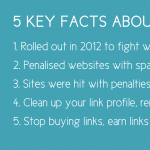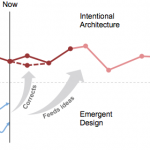I’ve run hundreds of studies researching the word-of-mouth. In all these studies (I am not exaggerating) one of the two top places of customer disappointment belongs to overpromising. Why is it increasingly more and more important not to overpromise? What is the alternative to overpromising?
— “After seeing your newest commercial I really have hoped, you will be better than your competition. but you are the same lying bastard.” — I keep on finding the more or less colorful version of this sentence in the letters and the stories of as many as 69% of disenchanted customers. They all seem to have had hopes and expectations built up through an overpromise and then crushed in a brutal contact with reality.
Let’s come back to the topic of expectations for a moment. They are: “assumptions about the likelihood of something occurring; coupled with the acknowledgment that the outcome may not be as expected. They reflect anticipated experience.” Expectations, in fact, are a cognitive illusion — we are comparing the ideal to the real world. Our brain uses expectations as a tool to assess how much energy it needs to secure for a given action. So, when we receive a promise, our nervous system gets ready for using up a certain amount of that energy. If the anticipated energy level matches the actual one, we perceive the promise as more or less realized. But if suddenly our brain finds itself grossly wrong, it feels like it had been cheated. All the negative triggers get activated and our memory makes it damn sure, we will remember this very encounter as an unpleasant one.
Overpromising
Regardless of the growing knowledge of how expectations are forming, companies seem to think that the only way to get customer attention is to promise the moon. It is even more alleviated by the fact that the competition keeps on getting fiercer and fiercer and also because shareholders expect steady 20% growth per year. So, overworked marketeers keep on trying to find a forever new edge to mobilize a over-saturated market to move. This is not in any way easy especially if you face the fact that customers keep on getting used to the better service ever faster. So, in ultimate desperation many brands are willing to promise anything to get a few more customers through the door. And then they constantly shoot new promises through the hip to keep them stay for a little longer.
The problem with this approach is this. As customers get constantly disappointed, the chance of building any emotional relationship with a brand gets ever smaller. And over time, it is strictly transactional, which means that whenever a better opportunity shows up they will be packing their bags right away. Sure, there are ways to keep them entangled into bundled offers, making it harder for them to leave, but although some customers might remain the prisoners of your brand, they will make damn sure to share their opinion with whoever wants to listen.
You might be thinking now: — Ok, overpromising might be a lousy strategy but why should we underpromise?
The need for predictability
Above all, customers want predictability. In fact, the more uncertain and complex the situation the more we grasp for it. Think of such a situation. You are repainting your home. A guy who promises to do it for you declares that it will take two weeks. Three weeks later, the job isn’t finished. How does it make you feel? Angry? Frustrated? Pissed? Would you recommend this dude to anyone else? I guess, not. Why would we ever assume that the customers don’t feel exactly the same with our brands?
Now, imagine this very same situation but the guy is done with paining after 10 days. And then he cleaned after himself, so once you are back home you can’t even notice that there was a construction field a few hours earlier. How does it feel now? I am guessing surprised, delighted, happy… And what is the first thing you are inclined to do? Share your story with others. We are no different when it comes to the experiences we have with brands. We don’t only want them to be living up to their commitments. We hope we will be delightfully surprised by them every now and then.
Tom Peters, the person who is known for coining the term: Under Promise — Over Deliver back in 1987, wrote:
“I’ve recently been with groups from two fine companies (building
products, packaging materials), both renowned for top-flight product
quality. Both have been working with customers to learn how they are
perceived in the marketplace. Both have been surprised that their
renowned quality has been less a focus of attention than their good,
or occasionally bad, record for responsiveness. That is, despite
quality that is demonstrably superior to their chief competitors’,
more than 80 percent of the customer feedback harps on responsiveness
and reliability. Quite frequently, “second-rate firms” (as their
competitors see them based upon relative quality) have received high
overall marks — because they have unfailingly met their commitments.”I can’t get over it,” one executive pondered. “I expected them to
talk about various quality enhancements, including some problems we’ve
had with a new product. Instead, they went on and on about a small,
late order here or an especially responsive act there.”Quality is important, to be sure. So is absolute response time. And
price. But at the top of most lists, by far, is keeping your word.
With uncertainty rising, if you “under promise, over deliver,” you
will not only keep the customers satisfied; you’ll keep the customers.”
The nature of a promise
Have you ever considered, why does your organisation exist? Clearly, there is enough competition. Your customers have plenty of choices anyway. Even if you specialize in something, others do a reasonable good job too. Or maybe even they are better than you. The brands out there seems to be sending a dizzying array of options to choose from. And theses options are not that much different form each other.
To make things even worse, most of the brands out there keep on sending the very much alike messages — banks are just banks, mobile providers are just mobile providers. They are all the best and improved version of themselves and the very first on the market, aren’t they all ? Seems like all the improved best is the new black of market communication for quite some time now. We keep on seeing more of the same and as direct marketing gets ever stronger, customers happily develop ad blindness the way we developed banner blindness back in early 2000. So, today choosing a brand it like getting the date through tinder — just swipe right.
For thousands of years promises represented a complex social norm to create obligations, to regulate behavior, to reduce uncertainty and to build trust. We keep them because it helps us to build the foundation necessary for maintaining and evolving relationships. The larger the promise, the greater the obligation is to fulfill it as subsequently it will show how trustworthy we are. So, in a way a promise is a debt. Why?
Because our brain seeks consistency. So when a brand makes a promise that something will happen, our brain want to believe it will, which is quite comforting. When a promise isn’t fulfilled, that consistency our brain was counting on disappears. It’s not only a breach of trust and expectation — it’s a violation of one of the most fundamental social norms. This goes way beyond disappointment, it alters the way people perceive and interact with your company. A study by Dutch researcher Manuela Vieth, showed that broken promises cause us to want to punish and seek revenge upon the promise breaker (hence the need to share the negative story with others). Furthermore, such a disappointment casts shadow on any future interactions between you and the given brand. Our brain keeps on warning us: — These guys are not reliable, stay put!
Underpromising doesn’t mean setting low expectations
Over-promising tends to make us feel like we are playing catch up. We do a half-assed job so we could say, “See, it’s technically done…”. Technically we have the service we agreed on while signing the terms of agreement (which, as we all know, no one reads). Technically, we have the access to whatever we need unless this is Sunday and the system is down. Technically…
So, what is underspromising? Underpromising is giving yourself the space for experimentation, mistakes and possible setbacks. It is also giving yourself the space for positively surprising your customers. If people expect less, once faced with a delightful element of your service, they will experience a feeling of unexpected award, which will make them feel positive towards your brand.
When we under promise we are able to surprise not only those around us but often ourselves. It gives us the space to do go further with what we are able to deliver best and in consequence it makes us feel proud. This is about giving yourself momentum. Every promise fulfilled will help you to associate your brand with positivity and trust. And it will hep you generate great word-of-mouth, which it turn will further inspire you to be even better. It’s called positive reinforcement. It works on humans. It works on animals. And it works on organizations.
Here’s one more thing. Often, when I talk about underpromising, people naturally assume that I mean setting low expectations. Quite the opposite! Whatever you promise to your customers needs to have outstanding elements. Otherwise they will never even notice you are there. Imagine a hotel telling you that the comfort of their beds is average and the food is ok-ish. Would you book a night there? Unlikely. But consider this. You show how great your place are but you don’t show all of it. You deliberately create a few hidden gems for your visitors to discover (like a glass of wine waiting for them on the table or a list of local attractions available tonight). Sure, you can let them know they can expect just that beforehand in order to catch their attention. But if you choose to miss that very detail, there is quite a chance they will be positively surprised and will feel a nice shot of dopamine in their blood. And the bottom line is this: you want that extra shot of dopamine as often as possible.
Easier said than done
How to operationalize it in your organization? The most precisely defined example I’ve managed to find so far comes from the world of cloud services. These guys have a few standards when it comes to customer service:
—a Service Level Indicator (SLI), which is something you can measure (e.g. a rate, average or durability).
— A Service Level Objective (SLO) is a predicate over a set of SLIs. For example, monthly uptime percentage (the SLI) will be at least 99.99%.
— A Service Level Agreement (SLA) is “an SLO plus consequences” : a promise made by a provider to meet certain customer visible SLOs.
When SLOs are tied to SLAs, they tend to end up defining the worst case behaviour that a customer can possibly tolerate (because anything beyond that triggers the penalty clause). If a provider consistently delivers service right up to the SLO limit however, it’s unlikely that customers would be very happy. So, there exists another internal measure of customer success called: Service Level Expectations (SLEs), which are the actual standard for the provided services and which are stricter than the SLOs defined in an SLA. From a cloud provider perspective, these are likely to be internal SLOs: the targets that the provider strives to meet, but is not contractually obligated to meet. So, in other words — the pretty great promise made by the cloud providers to the external world has another even more ambitious version internally.
This is the way to be able to underpromise and overdeliver: by creating a great promise to your customers and making a second stricter version of it as your internal ambition. This is not a new concept. Anyone working in sales knows it too well. You put your target on 100% but if you deliver 140% there will be a big bonus attached to it. Why can’t the very same tactics be as successful when it comes to customer satisfaction?
So, the idea behind such a double strategy is to have a goal that is unattainable but we could die trying to get there. The vision of the future that doesn’t not yet exist but you want to commit all your energy to advance that vision. It is the way to staying obsessed with where you are going rather than where others are going.








No Comments on this Post.Be the first